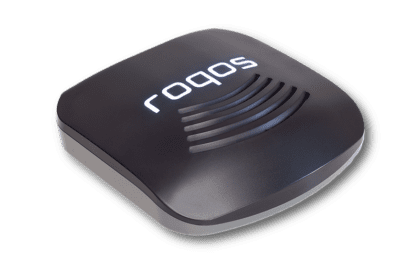What is Zero Trust Network Access (ZTNA)?
What is ZTNA and how does it work?
ZTNA (Zero Trust Network Access) is a secure access service edge that provides granular access to specific applications and resources within a corporate network.
With ZTNA, users can securely access with zero trust security, private apps and access resources within the corporate network through a direct and agent-based ZTNA approach.
Roqos SASE Appliance – Active Threat Monitoring / Full Network & Bandwidth Control / Built-in Ad-blocking / Includes 1 Year of Roqos Core Protect Service SALE PRICE: $649.99 $995.99 | BUY NOW
What are the benefits of ZTNA?
ZTNA can provided organizations with a number of security benefits to help ensure company resources remain protected and private, even with remote and hybrid employees.
Enhanced Security with ZTNA
ZTNA secures a network by providing direct access to private apps and corporate systems, allowing users to securely access applications and internal resources.
This is achieved through defined access control policies that grant access only to specific services, ensuring that an increasing number of users can access resources without compromising security.
Improved Application Access Control
The improved zero-trust network access (ZTNA) model offers enhanced application access control by providing authenticated users with access to internal resources and corporate applications based on device-specific access control policies.
This approach enables access to an application without granting broad access to the network, making ZTNA as a service a reliable solution for modern access control.
What are the use cases for ZTNA?
ZTNA use cases include
- Providing complete access to resources based on user authentication and authorization.
- Securing network access for an increasing number of users
- Allowing organizations to offer ZTNA to their users to replace traditional network security approaches.
By implementing ZTNA, organizations can ensure that users only have access to the resources they need, minimizing the risk of unauthorized access and data breaches using zero trust network access.
ZTNA is one option to replace traditional business/enterprise VPNs, which often provide complete access to an entire network, exposing it to potential threats.
How does ZTNA improve application access?
Zero trust network access (ZTNA) improves user access to applications by providing secure remote access to the entire network and granting access only to specific applications.
As the number of users accessing resources increases, ZTNA allows for scalable and flexible control over access to corporate assets.
Zero Trust Application Access with ZTNA
With the ZTNA architecture, users are authenticated to the ZTNA service, acting as a trust broker. The ZTNA vendor controls access based on user authentication, ensuring that users gain access to the specific application they need without compromising security.
ZTNA vs VPN?
The main difference between VPN and ZTNA lies in their approach to providing access to a network and its resources.
Comparing VPN and ZTNA for Secure Network Access
While VPNs grant access to a network and typically require user authentication and access, ZTNA focuses on granting access to specific applications and services.
Since ZTNA products offer this access solution through service-initiated ZTNA, where users can join the network and access resources based on their specific needs.
Unlike VPNs, which primarily secure network and application access, ZTNA also provides a zero trust architecture that ensures secure access to applications and data.
What is the Best ZTNA Solution Currently?
The Roqos SASE Appliance offers best-in-class ZTNA integration to lock down your network from any device and add access to applications and services.
The Roqos SASE Appliance also comes with a powerful Intrusion Prevention System (IPS) to notify you of unwanted access attempts.
With the Roqos SASE Appliance, you have the ability to access your home network from anywhere using the Roqos App.
You can monitor network activity, see how long certain devices spend logged on, and even create a list of restricted websites that will be blocked on your network.
This is all on top of the maximum security of exclusive OmniVPN.
FEATURES
- Active Threat Monitoring
- Full Network & Bandwidth Control
- Built-in Ad-blocking
- Includes 1 Year of Roqos Core Protect Service
Implementing ZTNA: Best Practices and Considerations
ZTNA requires Assessing access requirements, mapping user roles, and properly configuring security policies to minimize the risk of unauthorized access are all critical steps.
Creating Effective Access Policies with ZTNA
ZTNA allows organizations to use their access to define granular controls, ensuring that only authorized users can access sensitive resources.
When creating Access Policies for users, you’ll want to ensure that a policy for each application has been created and that users for each policy have been specified.
It’s important to remember that if a user hasn’t been granted access via a an Access Policy within ZTNA, they will be unable to access those specific company resources.
Implementing ZTNA for Granular Application Access
Unlike traditional access methods that focus on granting access to the entire network, ZTNA enables organizations to adopt a zero trust access approach by granting access to corporate resources only to specific applications.
This access management framework enhances security by authenticating and authorizing users for application access rather than network access.
This approach makes the network more secure by ensuring that users have full access to the necessary applications while minimizing potential risks.












